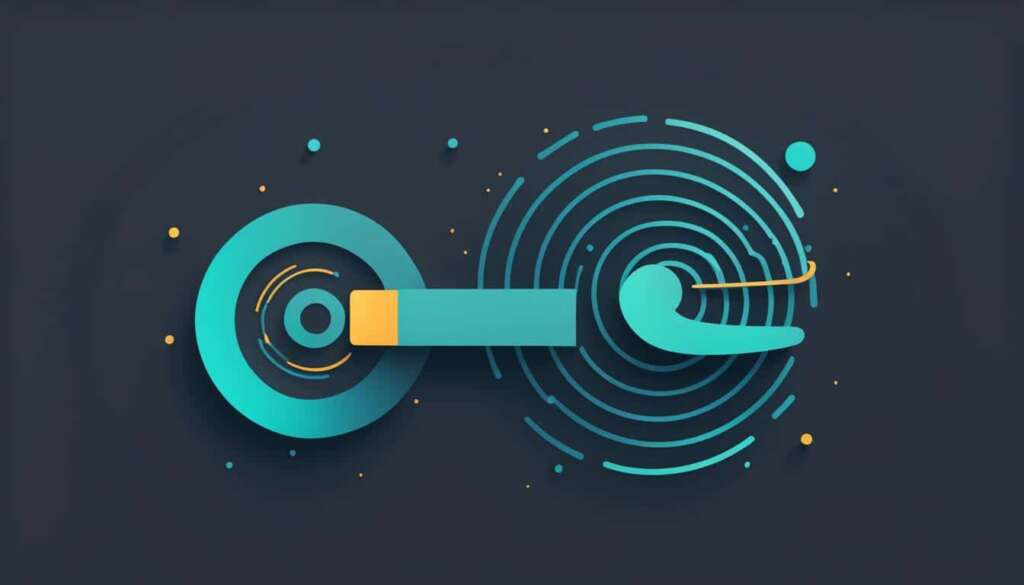Table of Contents
Are you looking to enhance your applications with powerful conversational AI capabilities? Look no further than the ChatGPT API provided by OpenAI. This interface allows developers to seamlessly integrate the ChatGPT model into their own applications, software, or platforms and leverage its natural language processing and generation features.
With the ChatGPT API, you can create more intelligent and engaging chatbots, perform advanced natural language processing tasks, and generate human-like text effortlessly. By making API calls to the ChatGPT model in Python, you can prompt the model and receive a model-generated response tailor-made for your needs.
Accessing the ChatGPT API in Python is straightforward. To get started, create an API key through the OpenAI website. Then, install the openai library in Python, which is essential for integrating the API into your projects. Set your API key in your Python script to authenticate and gain access to the API’s functionalities and resources.
Once you’ve gained access, it’s time to unleash the power of the ChatGPT API. Import the openai library and set up the necessary software package for OpenAI integration in Python. From there, define functions that utilize the API to interact with the ChatGPT model. Send prompts and receive model-generated responses programmatically, allowing you to create dynamic and conversational user experiences within your applications.
Cost is always a consideration when integrating APIs into your projects. The ChatGPT API offers different pricing options based on the model used and the number of tokens generated. OpenAI’s gpt-3.5-turbo model, designed for dialogue, is priced at $0.002 per 1,000 tokens. Its affordability makes it a viable choice even for projects with limited budgets.
In conclusion, integrating the ChatGPT API with Python opens up a world of possibilities for developers. With its conversational AI capabilities, you can take your applications to the next level, creating immersive and interactive experiences for your users. Start using the ChatGPT API today and unlock the potential of natural language processing and generation.
Accessing the API
To integrate ChatGPT into Python applications, developers need to follow a series of steps to access the ChatGPT API effectively. Let’s go through the process step by step:
Create an API Key
To get started, developers should create an API key through the OpenAI website. This key will be essential for authentication and access to the ChatGPT API’s functionalities and resources.
Install the openai Library
Next, developers need to install the openai library in Python. This library is a crucial component for integrating the ChatGPT API into Python applications smoothly. With the library installed, developers can take advantage of its features and simplify the implementation process.
Set the API Key
Once the openai library is installed, developers should set their API key in their Python script. This step ensures proper authentication and enables access to the ChatGPT API. By setting the API key correctly, developers establish a secure connection and gain the ability to communicate with the ChatGPT model.
Define a Function
Finally, developers can define a function to retrieve responses from ChatGPT using the API. This function enables developers to send requests to the model and receive model-generated responses. With this function in place, developers can seamlessly integrate ChatGPT’s conversational abilities into their Python applications.
By following these steps, developers can access the ChatGPT API in Python and unlock the potential of natural language processing and generation with ChatGPT integration.
| Step | Description |
|---|---|
| Create an API Key | Get an API key from the OpenAI website to enable access to the ChatGPT API. |
| Install the openai Library | Install the openai library in Python to facilitate the integration of the ChatGPT API. |
| Set the API Key | Set the API key in the Python script to authenticate and establish a secure connection with the ChatGPT API. |
| Define a Function | Create a function to send requests to the ChatGPT model and retrieve model-generated responses. |
Using the ChatGPT API
Once developers have successfully accessed the ChatGPT API, they can leverage its capabilities to enhance their Python scripts and applications. By importing the openai library and setting up the necessary software package, developers can seamlessly integrate the ChatGPT API into their projects.
With the ChatGPT API, developers have the power to interact with the ChatGPT model programmatically, enabling them to send prompts and receive model-generated responses. By defining functions that utilize the API, developers can easily retrieve responses from ChatGPT and seamlessly integrate them into their applications.
This opens up a world of possibilities for developers. They can create intelligent chatbots that can engage in meaningful conversations, perform complex natural language processing tasks, and enhance the conversational capabilities of their software.
“The ChatGPT API has revolutionized the way we approach natural language processing in Python. Its integration capabilities allow us to build sophisticated chatbots with ease and enable seamless interactions with our users.” – Sarah Johnson, Lead Developer at Chatbot Solutions
Python Chatbot Tutorial
To get started with using the ChatGPT API in Python, developers can follow these steps:
- Import the openai library into their Python script
- Set up the necessary software package for OpenAI integration
- Define functions that utilize the API to send prompts and receive model-generated responses
By following this tutorial, developers can quickly grasp the fundamentals of integrating the ChatGPT API into their Python projects and unlock the power of natural language processing.
Python Natural Language Processing
By incorporating the ChatGPT API into Python applications, developers gain access to advanced natural language processing capabilities. They can extract insights from text, analyze sentiment, classify information, and perform various other language-based tasks.
With ChatGPT’s natural language processing capabilities, developers can improve the user experience of their applications by ensuring more accurate understanding and interpretation of user input. This allows for more precise responses and tailored interactions, ultimately enhancing the overall usability of the software.

| Benefits of using ChatGPT API | Enhancements to Python Software |
|---|---|
| 1. Improved user engagement with intelligent chatbots | 1. More interactive and dynamic conversations |
| 2. Efficient processing of natural language | 2. Accurate interpretation and understanding of user input |
| 3. Enhanced usability and user experience | 3. Tailored responses and personalized interactions |
| 4. Simplified integration of natural language processing features | 4. Streamlined development of language-based applications |
How Much Does ChatGPT API Cost?
When integrating the ChatGPT API with Python, it’s important to consider the cost associated with its usage. The pricing of the API depends on the specific model used and the number of tokens generated.
OpenAI offers the text-davinci-003 API, which is their most powerful API, at a rate of $0.02 per 1,000 tokens. This model provides advanced natural language processing and generation capabilities, making it suitable for various applications.
However, OpenAI has recently released the gpt-3.5-turbo model, specifically designed for dialogue, at a significantly lower cost. This model is priced at $0.002 per 1,000 tokens, making it 10 times cheaper than the original text-davinci-003 model.
These cost savings make it more affordable for developers to integrate the ChatGPT API into their applications, even if they have limited budgets. It opens up opportunities for a wider range of developers to leverage the power of GPT-3 integration with Python in their projects.
Comparison of ChatGPT API Models
| Model | Cost per 1,000 tokens |
|---|---|
| text-davinci-003 | $0.02 |
| gpt-3.5-turbo | $0.002 |
As shown in the table above, the gpt-3.5-turbo model offers a significantly lower cost compared to the text-davinci-003 model. Developers can take advantage of this cost-effective option to integrate the ChatGPT API into their Python applications and enhance their projects with powerful natural language processing capabilities.
With the cost considerations in mind, developers can make informed decisions when choosing the most suitable ChatGPT API model for their needs. Whether opting for the advanced text-davinci-003 model or the cost-effective gpt-3.5-turbo model, integrating ChatGPT with Python opens up a world of possibilities in creating intelligent and conversational applications.
Conclusion
Integrating the ChatGPT API into Python allows developers to unlock the full potential of their applications with conversational AI capabilities. By seamlessly integrating ChatGPT into their software, developers can create chatbots that are more intelligent and engaging, perform complex natural language processing tasks, and generate human-like text.
The ChatGPT API provides a straightforward interface for making API calls to the ChatGPT model, enabling developers to easily interact with the model and leverage its powerful capabilities. With simple Python code, developers can send prompts and receive model-generated responses, empowering them to create rich and dynamic conversational experiences in their applications.
Although there is a cost associated with using the ChatGPT API, the benefits outweigh the expenses. By integrating the API, developers can open up new possibilities for creating innovative and interactive applications that can understand and respond to natural language. Whether it’s building a virtual assistant, enhancing customer support systems, or creating personalized user experiences, the ChatGPT API in Python offers the tools and flexibility to take your Python projects to the next level.
Integrating ChatGPT into your Python software is a straightforward process, and OpenAI provides comprehensive documentation and tutorials to guide developers through the integration steps. So don’t wait any longer, start exploring the potential of the ChatGPT API today and unlock the power of conversational AI in your Python projects.
FAQ
How can I integrate ChatGPT API with Python effectively?
To integrate ChatGPT API with Python, you need to follow a few steps. First, create an API key on the OpenAI website. Then, install the openai library in Python and set your API key in your Python script for authentication. Finally, define a function to retrieve responses from ChatGPT by sending requests and receiving model-generated responses.
How do I access the ChatGPT API?
To access the ChatGPT API, developers need to install the openai library in Python and set up the necessary software package for OpenAI integration. They also need to create an API key through the OpenAI website and set it in their Python script for authentication. With these steps completed, they can send prompts and receive model-generated responses programmatically.
How can I use the ChatGPT API in Python?
Using the ChatGPT API in Python is straightforward. After importing the openai library and setting up the required software package, developers can interact with the ChatGPT model by sending prompts and receiving model-generated responses programmatically. They can define functions that utilize the API to get responses from ChatGPT and integrate these responses into their applications, enabling them to create chatbots, perform natural language processing tasks, and enhance the conversational capabilities of their software.
What is the cost of using the ChatGPT API?
The cost of using the ChatGPT API depends on the model used and the number of tokens generated. The text-davinci-003 API, OpenAI’s most powerful API, is priced at
FAQ
How can I integrate ChatGPT API with Python effectively?
To integrate ChatGPT API with Python, you need to follow a few steps. First, create an API key on the OpenAI website. Then, install the openai library in Python and set your API key in your Python script for authentication. Finally, define a function to retrieve responses from ChatGPT by sending requests and receiving model-generated responses.
How do I access the ChatGPT API?
To access the ChatGPT API, developers need to install the openai library in Python and set up the necessary software package for OpenAI integration. They also need to create an API key through the OpenAI website and set it in their Python script for authentication. With these steps completed, they can send prompts and receive model-generated responses programmatically.
How can I use the ChatGPT API in Python?
Using the ChatGPT API in Python is straightforward. After importing the openai library and setting up the required software package, developers can interact with the ChatGPT model by sending prompts and receiving model-generated responses programmatically. They can define functions that utilize the API to get responses from ChatGPT and integrate these responses into their applications, enabling them to create chatbots, perform natural language processing tasks, and enhance the conversational capabilities of their software.
What is the cost of using the ChatGPT API?
The cost of using the ChatGPT API depends on the model used and the number of tokens generated. The text-davinci-003 API, OpenAI’s most powerful API, is priced at $0.02 per 1,000 tokens. The gpt-3.5-turbo model, designed specifically for dialogue, is more affordable at $0.002 per 1,000 tokens, which is 10 times cheaper than the original model. This pricing structure makes it more accessible for developers to integrate ChatGPT API into their applications, even with limited budgets.
What are the benefits of using the ChatGPT API in Python?
Using the ChatGPT API in Python allows developers to enhance their applications with conversational AI capabilities. By integrating ChatGPT into their software, developers can create more intelligent and engaging chatbots, perform natural language processing tasks, and generate human-like text. The API provides an easy-to-use interface for making API calls to the ChatGPT model, enabling developers to access its powerful capabilities and explore new possibilities in creating innovative and interactive applications.
.02 per 1,000 tokens. The gpt-3.5-turbo model, designed specifically for dialogue, is more affordable at
FAQ
How can I integrate ChatGPT API with Python effectively?
To integrate ChatGPT API with Python, you need to follow a few steps. First, create an API key on the OpenAI website. Then, install the openai library in Python and set your API key in your Python script for authentication. Finally, define a function to retrieve responses from ChatGPT by sending requests and receiving model-generated responses.
How do I access the ChatGPT API?
To access the ChatGPT API, developers need to install the openai library in Python and set up the necessary software package for OpenAI integration. They also need to create an API key through the OpenAI website and set it in their Python script for authentication. With these steps completed, they can send prompts and receive model-generated responses programmatically.
How can I use the ChatGPT API in Python?
Using the ChatGPT API in Python is straightforward. After importing the openai library and setting up the required software package, developers can interact with the ChatGPT model by sending prompts and receiving model-generated responses programmatically. They can define functions that utilize the API to get responses from ChatGPT and integrate these responses into their applications, enabling them to create chatbots, perform natural language processing tasks, and enhance the conversational capabilities of their software.
What is the cost of using the ChatGPT API?
The cost of using the ChatGPT API depends on the model used and the number of tokens generated. The text-davinci-003 API, OpenAI’s most powerful API, is priced at $0.02 per 1,000 tokens. The gpt-3.5-turbo model, designed specifically for dialogue, is more affordable at $0.002 per 1,000 tokens, which is 10 times cheaper than the original model. This pricing structure makes it more accessible for developers to integrate ChatGPT API into their applications, even with limited budgets.
What are the benefits of using the ChatGPT API in Python?
Using the ChatGPT API in Python allows developers to enhance their applications with conversational AI capabilities. By integrating ChatGPT into their software, developers can create more intelligent and engaging chatbots, perform natural language processing tasks, and generate human-like text. The API provides an easy-to-use interface for making API calls to the ChatGPT model, enabling developers to access its powerful capabilities and explore new possibilities in creating innovative and interactive applications.
.002 per 1,000 tokens, which is 10 times cheaper than the original model. This pricing structure makes it more accessible for developers to integrate ChatGPT API into their applications, even with limited budgets.
What are the benefits of using the ChatGPT API in Python?
Using the ChatGPT API in Python allows developers to enhance their applications with conversational AI capabilities. By integrating ChatGPT into their software, developers can create more intelligent and engaging chatbots, perform natural language processing tasks, and generate human-like text. The API provides an easy-to-use interface for making API calls to the ChatGPT model, enabling developers to access its powerful capabilities and explore new possibilities in creating innovative and interactive applications.













